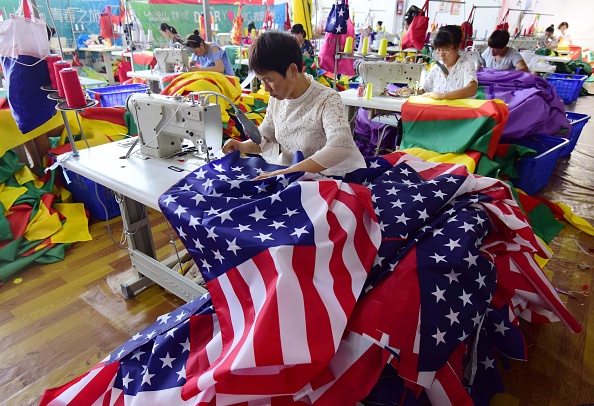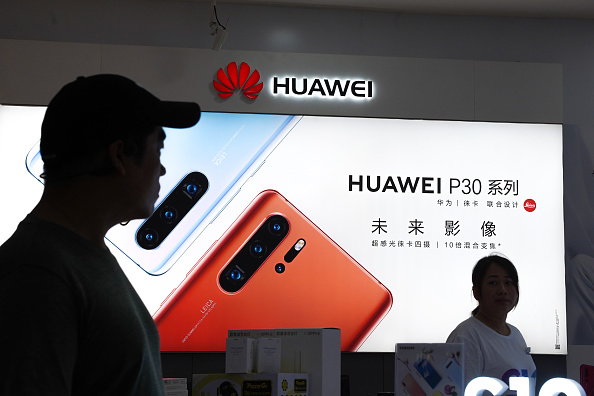
 Risky Business
Risky BusinessThe global economy took a nosedive this week as the two largest economies in the world dug deeper into the U.S.-China trade war, threatening to take down global fortunes as collateral damage. The escalation of hostilities follows the Trump administration's plan to increase tariffs on all Chinese imports to the United States from 10% to 25%. As Beijing retaliated, markets tanked and U.S. consumers woke up to the prospect of paying higher prices for consumer goods.
While the White House today said that the US would delay any decision to raise tariffs on automobiles and auto parts for six months, neither side is looking to bend any time soon - Beijing is questioning Washington's sincerity in wanting to reach a deal, whereas the U.S. remains defiant. Many question whether the crux of the problem is actually the trade deficit, or whether it's more about China's investment rules and the unlevel playing ground for U.S. investment in China. Either way, the protracted struggle is inflicting global economic pain, and instilling panic in U.S. farmers that they may become the biggest losers in the struggle. "We don't want to be collateral damage," said Kevin Paap, a corn and soybean farmer in southern Minnesota. "If they don't reach a conclusion soon, it's going to be really somber times."
Meanwhile, China is swiftly losing its political leverage in the United States, with businesses and policymakers on both sides of the aisle hardening their position against the Middle Kingdom and the restrictions it has placed on foreign companies. A new report by the National Committee on U.S.-China Relations finds that in 2018, two-way foreign direct investment (FDI) plummeted by 60% amid the tumultuous U.S.-China trade war, although bilateral venture capital flows continued to increase.
 Upping the Games
Upping the GamesThe White House issued an executive order to ban American telecommunications firms from installing potentially threatening foreign-made equipment. While the action did not specify any nation or company, it is widely believed that this is yet another strike against Huawei, China's top telecommunications company.
The Commerce Department concurrently placed Huawei on a list of firms that are potentially a risk to national security. The potential consequences for one of China's leading technology firms could be grievous, but Huawei says it's been anticipating a US tech ban for years, and has a backup plan in store.
Upping the ante in the China-United States-Canada spy games, two Canadian men were charged this week in Beijing with gathering state secrets and providing them to foreign forces. The arrests are widely interpreted as retaliation for the attempted extradition of Huawei's Meng Wanzhou to the United States.
 Farewell to a Visionary
Farewell to a VisionaryTributes are pouring in from around the world to honor the passing of I.M. Pei, one of the world's greatest architects. Pei, who died at the age of 102, was a determined modernist who imbued his architecture with a civic purpose. Among his many notable buildings, he is most well known for the glass pyramid at the Louvre in Paris, the Bank of China building in Hong Kong, and the East Building of the National Gallery of Art in Washington.
Born in China in 1917, he immigrated to the U.S. for his studies in 1935 and returned in 1974, where he had a transformative impact on architecture and style. The Committee of 100, a non-profit leadership organization founded by I.M. Pei in 1990, writes, "Pei had always been proud of his Chinese ancestry. He also was committed to his American lineage." In a video for his 100th birthday, he observed, "My children, my grandchildren particularly, they are becoming more and more American. . . I also want them to know that they came from somewhere, that has a long history behind it. . . I came as a Chinese, I remain as a Chinese. Now I am American Chinese." You can watch China-US Focus's special tribute video to I.M. Pei here.
Prepared by China-US Focus editorial teams in Hong Kong and New York, this weekly newsletter offers you snap shots of latest trends and developments emerging from China every week, while adding a dose of historical perspective.
- 2019-05-10 Two Steps Forward, Two Steps Back
- 2019-05-03 The Final Laps?
- 2019-04-26 The Great Turbine Caper?
- 2019-04-19 Sowing Seeds of Tension
- 2019-04-12 Slow or Steady?
- 2019-04-05 The Last Mile is The Hardest
- 2019-03-29 From Negotiation to (Smart) Competition
- 2019-03-23 Xi Hits the Road
- 2019-03-16 Proceeding With Caution
- 2019-03-08 Reading the Tea Leaves
- 2019-03-01 The Art of No Deal
- 2019-02-23 The Devil is in the Details
- 2019-02-16 Trade Talks, Round 3: Waiting for Trump-Xi?
- 2019-02-08 Welcoming the Pig
- 2019-02-02 The Final Countdown: One Month Until Trade Talks Deadline
- 2019-01-26 How Slow Will it Go?
- 2019-01-18 Countdown to Trump-Kim: Round Two
- 2019-01-11 Kim Jong-un Visits Beijing
- 2019-01-04 Cross-strait tensions mount on anniversary
- 2018-12-21 Xi’s 40th Anniversary Speech